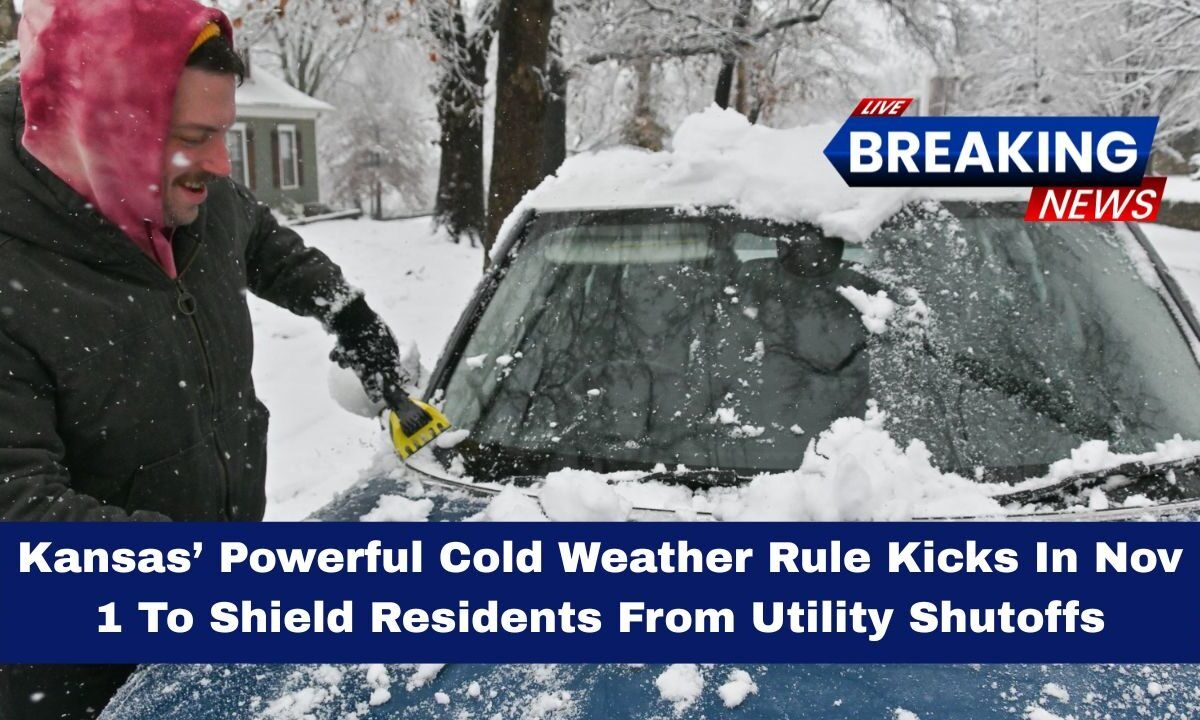As winter approaches, Kansas is once again activating the Cold Weather Rule — a vital protection designed to help residents who are behind on their utility payments.
Beginning November 1 and lasting through March 31, this rule ensures that no Kansan is left without heat or electricity during the coldest months of the year.
The Kansas Corporation Commission (KCC) first introduced this rule in 1983 to prevent unsafe living conditions when temperatures drop below freezing.
Here’s everything you need to know about how the rule works, who qualifies, and what steps to take to stay protected this winter.
What Is the Cold Weather Rule?
The Cold Weather Rule is a state regulation that stops utility companies from disconnecting residential service when cold weather is expected.
Specifically, it prevents disconnection when local temperatures are forecasted to drop below 35°F (1.7°C) within the next 48 hours.
This protection applies only to residential customers served by utility companies regulated by the Kansas Corporation Commission.
While it does not forgive unpaid bills, it helps customers avoid disconnection by setting up structured payment arrangements.
How the Payment Plan Works
Customers who are behind on payments can contact their utility provider to set up a 12-month payment plan under this rule. The plan allows residents to gradually pay off overdue balances while continuing to receive service.
Here’s how the payment plan is structured:
| Payment Item | Details |
|---|---|
| Initial payment | 1/12 (about 8%) of the total amount owed |
| Current bill | 1/12 of the current month’s bill |
| Additional costs | Full amount of any disconnection or reconnection fees and deposits |
| Payment duration | Remaining balance spread over 11 months plus current bills |
| Eligibility | Residential customers with past-due accounts under KCC jurisdiction |
To qualify, customers must contact their utility company before disconnection and agree to the payment terms. Utilities are required to offer these arrangements to prevent service shutoff during cold months.
Key Features of the Cold Weather Rule
- Protection from disconnection: Service cannot be disconnected when temperatures are expected to fall below 35°F in the next 48 hours.
- Payment flexibility: A 12-month plan gives customers time to pay off overdue bills.
- Notice requirement: Utilities must provide 10 days’ notice before any disconnection.
- Customer responsibility: Residents must make the first payment and keep current with new bills to stay protected.
- Applicable utilities: Covers electric, natural gas, and water utilities under the KCC’s regulation.
Who Qualifies for Protection?
Any residential customer with a past-due balance on gas, water, or electric service is eligible — as long as the utility is under state regulation.
However, municipal utilities or rural electric cooperatives not regulated by the KCC may follow their own versions of the rule, so customers should contact their providers to confirm available protections.
This program is designed for individual households, not for commercial or industrial accounts.
Why the Rule Matters
For many Kansans, especially low-income families or seniors on fixed incomes, winter energy costs can become overwhelming. The Cold Weather Rule acts as a safety net, allowing residents to stay connected while working toward paying off their bills.
It also helps protect public health by ensuring people can maintain safe indoor temperatures, preventing risks like frostbite, hypothermia, or frozen water lines during severe cold spells.
Steps You Should Take
- Contact your utility provider immediately if you have a past-due balance.
- Request enrollment in the Cold Weather Rule payment plan.
- Make your initial payment as outlined in the plan.
- Pay your current monthly bills in full to remain eligible.
- Keep records of your payment agreement and follow up if you receive any disconnection notices.
The Kansas Cold Weather Rule is a crucial lifeline for residents who struggle with utility costs during harsh winters.
It offers protection from disconnections, ensures access to essential heating and water services, and provides a manageable way to repay overdue balances.
With the rule taking effect on November 1, now is the time to reach out to your utility company, set up a payment plan, and secure your home’s warmth and safety for the season ahead.




